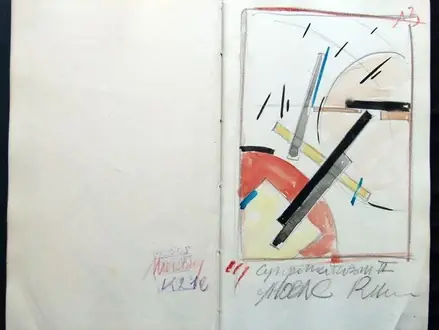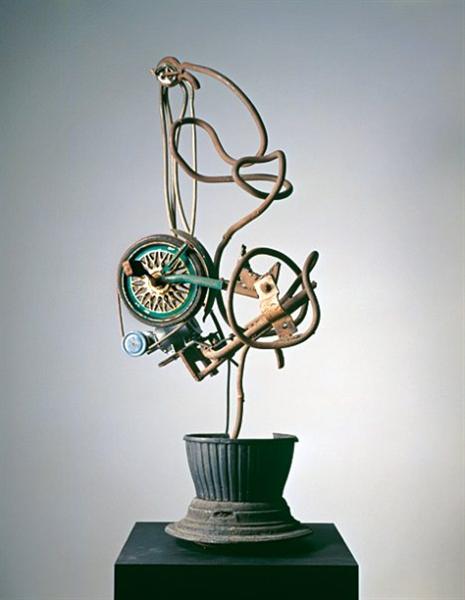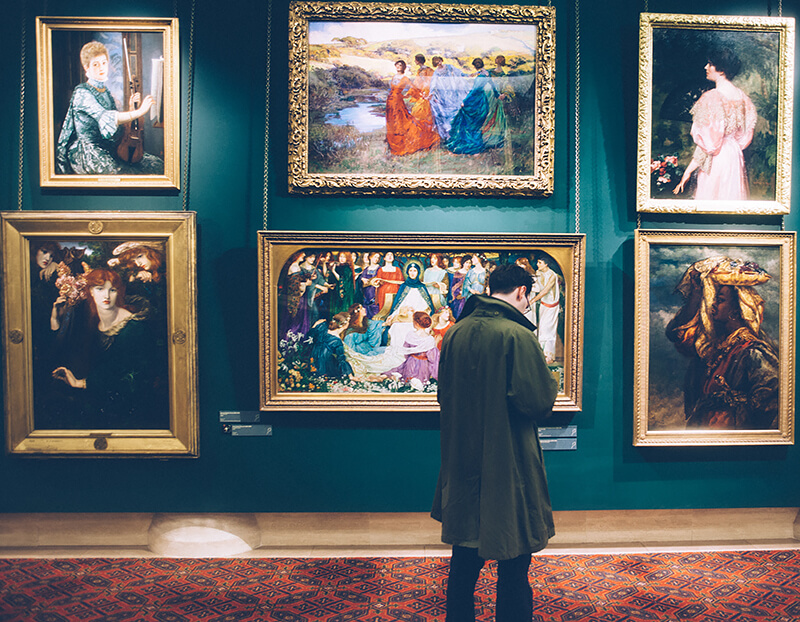Title of Artwork: “Sketchbook”

Artwork by Kazimir Malevich
Year Created 1916
Summary of Sketchbook
Malevich was a key figure in the Russian avant-garde movement of the early 1910s. From the Neo-Primitive period to Cubo-Futurism, he was a major artist who expressed his creative genius. Moving, coloured masses were created by overtaking the amorphous, neo-primitive and cubo-futurist eras of art. The Suprematism of Malevich and his disciples, Olga Rozanova, Ivan Kliun, Ilya Chashnik, and Nikolai Suetin had become a revolution within the avant-garde by 1916.
All About Sketchbook
He was the most radical and charismatic avant-garde leader to date when he founded the Supremus group. From exhibitions and signboards to cafés, Nikolay Punin observed in 1917 that Supermatism was blooming like an opulent flower throughout Moscow. On these sketches and watercolour draughts, the coloured quadrangle is, objectively speaking, the foundation of the composition. The famous black square was exhibited in 1915 and shown in a niche where Russians place their icons for worship. The other elements emerge from this form before they are assigned a place in the pictorial space.
For the opera Victory over the Sun, Malevich linked this affirmation to his Black Square, or Black Quadrangle, which he created in 1913. Malevich, Matyushin, and Kruchenykh staged an opera in December 1913 that was significant not only because it marked the beginning of Russian futurist opera, but also because it opened the door to a new way of looking at the world. The discovery of the suprematist system was attributed to Kazimir Malevich’s work on the costumes and sets.
For his pamphlet, he wrote to Matyushin in the summer of 1915, requesting that some of his sketches be included: “regarding the drawings, something made in total unconsciousness has borne unexpected fruits.”. Malevich’s black square for the stage curtain inspired Matyushin to republish the pamphlet, which included sketches of the artist’s work. “The black square is the source of all possibility,” Malevich said when explaining his decision. Disintegration of this cube-and-sphere powerhouse brings a new level of sophistication to the art of painting.
Ancestors of both Cubes and Spheres can be found here. Kazimir Malevich had the right to date the black square’s birth in 1913 because it was based on a real-life event. The origins of the black quadrangle can be traced back to a white and black square sketch, which, according to some experts, exists even though it isn’t technically a curtain. The word’square’ appears to have been inserted when Malevich later modified the date in the inscription for the drawing, tableau 5, tableau 1, act 2, square, act 2. Thus, “the appearance of ‘black squares in Malevich and in 20th century art in a wider sense’ is striking for its abrupt; unexpected; unpredictable nature.” (J.Cl Marcadé’s, Cahier I, 115) The black square’s reign began. Malevich grouped the squares into a black, red, and white triangle based on their colour, and he frequently referred to this arrangement (Suprematism: 34 Drawings).
As it has progressed through time 1913 to 1918 was the time period in which these developments occurred. In volume, they were all performed under conventional surface-plane signs that hint at future body planes in some way. It’s important to remember, as Malevich wrote, that the space of a painting is not that of Earth, and its relationship to shapes that we are familiar with in that space and the shapes contained in the pictorial space of his paintings, have nothing to do with each other.
They don’t play by the same set of guidelines. The three supremacist squares stand for the establishment of worldviews and worldbuilding that are incredibly precise in their construction and definition. The black square was a symbol of the economy, the red square was a symbol of revolution, and the white square was a symbol of pure movement and action in daily life. Squares in the Sketchbook are interpreted by Kazimir Malevich in the same way each time they appear; the circular lines in these pencil and watercolour drawings, which number 8-11-12-13, appear to be a reference to the opera Victory over the Sun.
Sketches were made to show, support, and analyse the journey of an artist-teacher who was still searching for his truth in 1916.
Information Citations
En.wikipedia.org, https://en.wikipedia.org/.
























